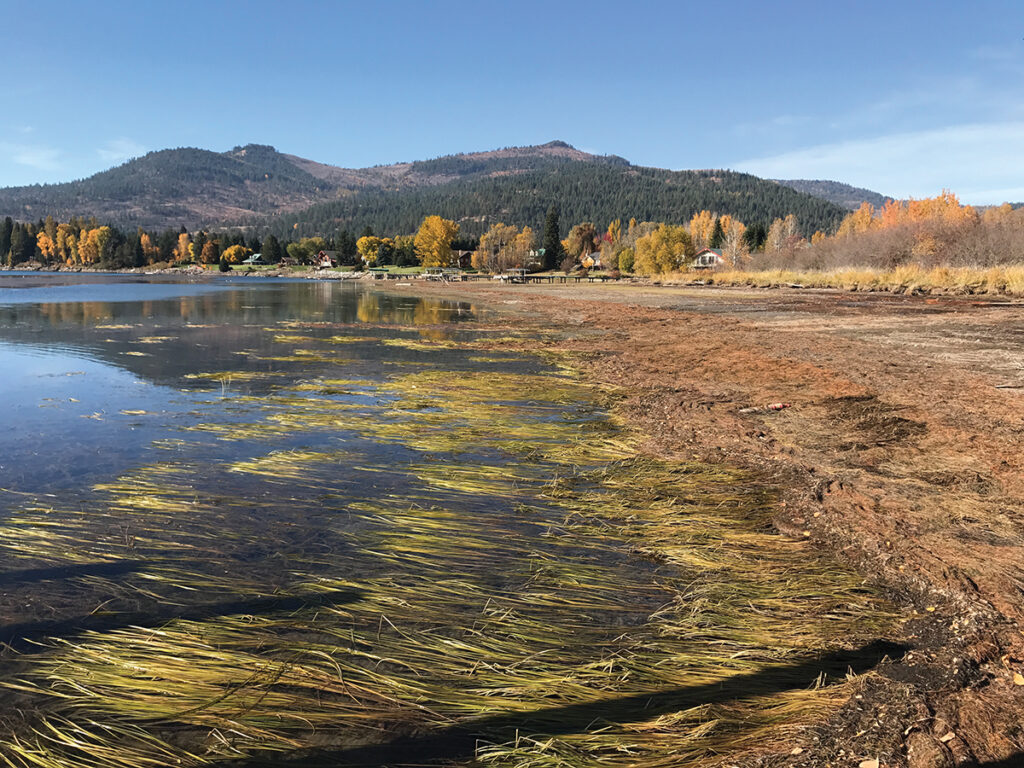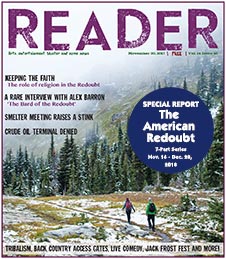Federal, state and county officials discuss aquatic noxious weeds, invasive species
By Soncirey Mitchell
Reader Staff
Representatives from the U.S. Army Corps of Engineers, Idaho Department of Agriculture and Bonner County Noxious Weeds joined forces March 13 for a public update on the status of aquatic and riparian noxious weeds and invasive species in Idaho, as well as upcoming treatment plans. The organizations currently prioritize the eradication of Eurasian watermilfoil, curlyleaf pondweed, flowering rush and yellow flag iris, and efforts to keep quagga and zebra mussels from Lake Pend Oreille.
“The take-home message that I tried to convey in my capacity as the meeting moderator was that ‘noxious weeds’ and ‘invasive weeds’ are not interchangeable,” Bonner County Noxious Weeds Director Chase Youngdahl told the Reader. “While noxious weeds can be invasive — and in many cases are — ‘noxious’ is a legal designation and is defined in Idaho statute.”
Idaho Code 22-2402 defines noxious weeds as “any plant having the potential to cause injury to public health, crops, livestock, land or other property,” and that has been identified in Idaho Administrative Procedures Act Code 02.06.09. These species are “targeted by government agencies using taxpayer funds”; however, invasive species that aren’t considered noxious should be dealt with by property owners, according to Youngdahl.
ISDA’s presentations by Program Specialists Jennifer Roman and Ryan Hanna stated that Idaho currently has 160 listed invasive species and 71 noxious species. In addition to those listed above, ISDA prioritizes management of the riparian Japanese knotweed and purple loosestrife.
To help identify and contain noxious species, ISDA coordinates an annual Idaho Aquatic Noxious Weed Survey. In 2024 alone, organizers conducted 5,185 surveys throughout Lake Pend Oreille, 962 of which uncovered noxious weeds.
Invasive and noxious aquatic species are primarily spread by contaminated watercraft coming from neighboring areas, released aquarium pets and the use of store-bought live fishing bait, according to Hanna. To combat this, watercraft users should visit any ISDA checkpoint for a free inspection and hot water decontamination.
During the 2024 season, the ISDA performed 21,355 inspections in the Bonner Soil and Water Conservation District, discovering 21 watercraft contaminated with noxious weeds before they reached the water.
Idaho watercraft users going into the 2025 season must contend with even more stringent regulations following changes passed during the 2024 Legislature. The state’s new “pull-the-plug” law requires watercraft users to remove and clean all drain plugs. Additionally, I.C. 22-1905A requires that users exiting the water immediately remove “all visible vegetation” and drain all water from their crafts, “including but not limited to water in the hull, ballast tanks, bilges, livewells and motors.” All nonresidents must also have their watercraft inspected and purchase an Invasive Species Fund sticker from the Idaho Department of Parks and Recreation.
According to presenter Taylor Johnson, the Corps’ chief of Natural Resources at Albeni Falls Dam, herbicide treatments will begin on the Corps’ property around the lake in early April. Experts employ a combination of chemical, mechanical and manual treatment methods, including the use of ProcellaCOR for submerged Eurasian watermilfoil, Aquastrike and Reward for submerged flowering rush and Imazapyr for bare-ground flowering rush and milfoil.
Johnson emphasized that herbicides containing glyphosate are not used on submerged plants and will only be applied to the Clark Fork Driftyard boom.
The Corps will apply dewatered treatments from April through May at the Driftyard, Oden Bay, Morton Slough, Riley Creek, Mallard Bay, Hoodoo Creek and the Pack River Delta, covering approximately 19.92 acres. To protect the bull trout population, submerged treatments will occur between July 15 and Aug. 31 at the Driftyard, Pack River, Oden Bay, Morton Slough and Riley Creek, likely covering 42.25 acres. Neighboring properties will receive written notifications before applications begin.
For more information on invasive species and noxious weeds, visit invasivespecies.idaho.gov.










 Coming up this week! Don’t miss Live Music, the Summer Sampler, the Art Party, Monarch Grind, the Sandpoint Renaissance Faire, and more! See the full list of events in the
Coming up this week! Don’t miss Live Music, the Summer Sampler, the Art Party, Monarch Grind, the Sandpoint Renaissance Faire, and more! See the full list of events in the 